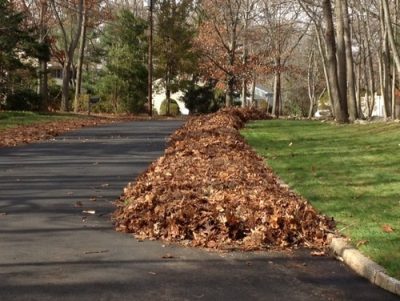Improve your soil and yard the organic way with a valuable garden booster that grows on trees
Why are leaves valuable to the gardener? It’s simple. When incorporated into soil, fall leaves:
- Add nutrients, including phosphorous and potassium
- Increase the soil’s microbial life
- Boost its water-holding capacity
- Improve its structure, known as tilth
And did I mention that leaves are free? It takes little effort on your part to get them working for you, so instead of sweeping them to the curb, here are five ways to use leaves in your garden.
2. Add them to vegetable beds. You can incorporate whole or chopped leaves into any cleared-out vegetable beds. They will mostly decompose over the winter, then in spring you can mix in whatever is left. If you don’t want to see leftover leaves in your beds, shred them first.
Don’t have a shredder? A garbage can and a string trimmer will work. Use a 55-gallon garbage can. Fill it three-quarters of the way with leaves. Put the string trimmer in, turn it on and move it through the layers of leaves. Be sure to wear eye and ear protection.
4. Mix leaves — shredded or not — into a compost pile now, where they’ll break down over winter. Even better: Stockpile dried leaves, in garbage bags or piled in that out-of-the-way place, for summer. In warm weather there’s an abundance of succulent green material (nitrogen) for your compost pile. But to keep the composting process aerobically working, and not rotting, it needs lots of “browns” (carbon), in the form of dried material.
5. Protect outdoor potted plants. When the weather turns cold and potted plants (the hardy ones, not houseplants or tropicals, which must be brought indoors) go dormant, pick a sheltered place on the north, west or east side of your house. Cluster the pots together against the house, ideally beneath an overhang. Pile dried leaves over, under and between the entire grouping of pots.
If the area is windy, corral the pots with chicken wire so the leaves won’t blow away. Pile the leaves inches deep, covering the pot and as much of the plant as possible. Under this insulating blanket, both plants and pots should come through the winter just fine. With this method, even terra-cotta pots can stay outdoors, as long as water can’t get into them and freeze.
The worst thing you can do with fall leaves? Burn them. Most municipalities have banned leaf burning, and for good reason. Burning leaves pollutes the air, causes problems for people with respiratory illnesses and creates a fire hazard. Besides, as you can see, there are so many more worthwhile things to do with leaves.
Source: houzz.com ~ By: Therese Ciesinski









